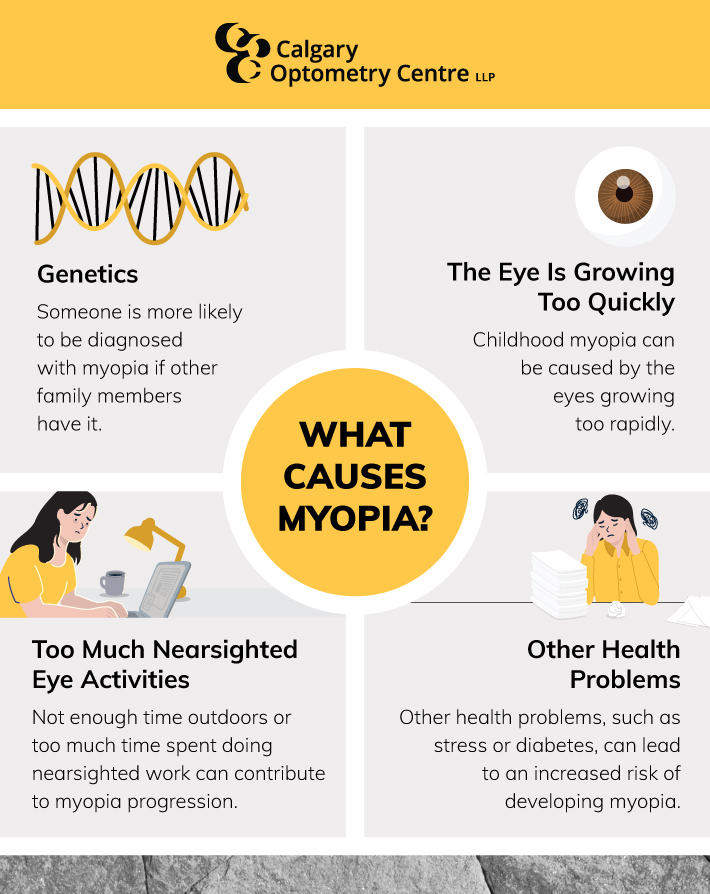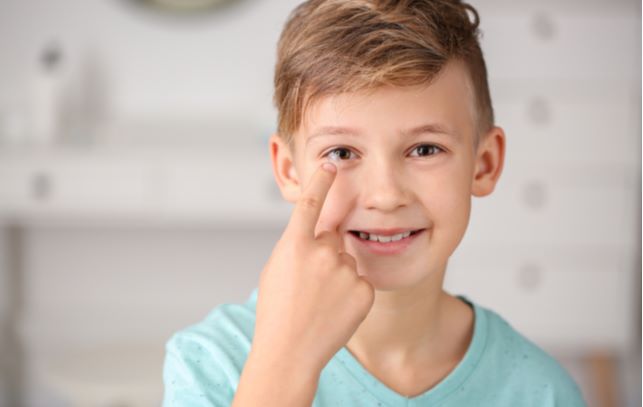Myopia, also known as nearsightedness, is a very common vision disorder, especially in people younger than 20. Unfortunately, it’s also on the rise, affecting more and more people each year.
The good news is, if you’ve been diagnosed with myopia, there are lots of ways to control and manage your symptoms to keep your eyes healthy and seeing well.
The first step to receiving proper treatment for your myopia is to understand the disorder. What causes myopia? How is it diagnosed? What are the symptoms? If you’ve ever asked these questions, you’re in the right place. Keep reading to learn everything you need to know about myopia.
What is Myopia?
Before getting to anything else, it’s essential to understand exactly what myopia is.
People with myopia have difficulty seeing distant objects but can see things close to them without any problems.
Myopia is the most frequent correctable eye condition and occurs if the eyeball is too long or the cornea is too curved. This causes the light entering your eye to focus incorrectly, making distant objects blurry.
Myopia in Children
Although adults can be diagnosed with myopia, it often presents in early childhood. Myopia is especially concerning for children because as your child’s visual system continues to develop and grow, myopia will continue to get worse if left untreated.
When a child is myopic, signals are sent to the eyes to react to the lack of focus, causing the eyes to grow even longer. This cycle can result in visual impairment and an increased risk of developing other eye conditions throughout your child’s life.
What are the Symptoms of Myopia?
If you have myopia, you may notice that:
- Distant objects look blurred, while close items appear clear
- You experience frequent headaches or eye strain
- You have to squint while performing near-vision tasks
- You get tired when driving, playing sports, or looking more than a few feet away
If you’re concerned about Myopia in your child, you can look for the following symptoms:
- A decrease in school performance
- Shortened attention span
- Squinting, closing one eye, or holding an object close
- Complaints of headaches, eye pain, or sensitivity to light

What Causes Myopia?
While you now know that the leading cause of myopia is when your eyeball is too long or the cornea has too much curvature, it is not entirely understood why this happens. Some research suggests a link to several risk factors.
Genetics
Genetics has been found to play a role in myopia. If other family members have it, you or your child may be more likely to be diagnosed with myopia.
The Eye is Growing Too Quickly
Childhood-onset myopia is most commonly caused by the eyes growing too rapidly, which can be due to genetics, environment, or individual characteristics.
Too Much Nearsighted Eye Activities
Recent studies have shown that not enough time outdoors or too much time spent doing nearsighted work can progress myopia.
Other Health Problems
In some cases, other health problems, such as stress or diabetes, can lead to an increased risk of developing myopia.
How is Myopia Diagnosed?
The only way to get your myopia diagnosed is by receiving a thorough eye exam from your optometrist.
Diagnosing Myopia in Adults
To see if you have myopia, your optometrist will perform various tests to examine your eyesight. Some of these tests include:
- First, they will perform a visual acuity test which allows your optometrist to evaluate your eyesight based on how well you can read letters on an eye chart.
- Then they will use a lighted retinoscope to measure how light is reflected by your retina, determining if myopia is the cause of your vision problems.
- Your optometrist will also use a phoropter to measure the amount of your refractive error by placing a series of lenses in front of your eyes. This helps them identify your prescription.
Diagnosing Myopia in Children
Because a child’s visual system is continuously developing, it’s important to ensure they receive regular eye exams starting before they turn 1. Most nearsighted children are diagnosed between ages 3 and 12, so they must be seen at least every 2 years by an eye doctor during this time.
During a children’s eye exam, your optometrist will do a physical examination of your child’s eyes and check any signs of eye conditions or diseases, including myopia. Since myopia runs in families, make sure to tell your optometrist if your child has any family members with vision issues.
How is Myopia Controlled?
Most cases of myopia are easily controlled with eyeglasses or contacts, but there are many additional treatment options available to keep your eyes in the best condition in a way that is most beneficial for you.

Ortho-K Specialty Contact Lenses
Unlike regular contacts, specialty contacts can actually work to correct your myopia while you wear them. Ortho-K contacts can reshape the cornea while you sleep, freeing you of having to wear contacts during the day.
Laser Eye Surgery
Laser eye surgery is a great way to control myopia if you’re looking for a treatment that doesn’t require wearing glasses or contacts. Surgeries such as LASIK, LASEK, and PRK can correct refractive errors causing myopia.
Vision therapy
Vision therapy is an individual treatment plan created for you by your optometrist to strengthen the muscles through eye exercises and improve your focus.
Get Help With Your Myopia Today
Do you think you or your child may have myopia? Then, book an appointment with us at Calgary Optometry Centre today!




